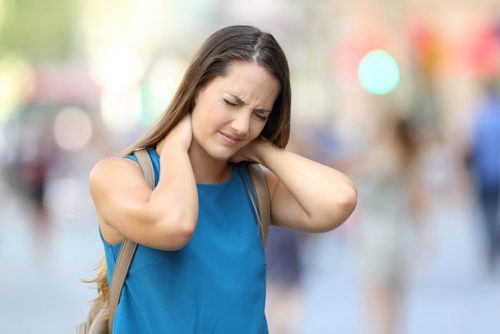Ibuprofen and paracetamol are available for over-the-counter holidays, first of all, they allow you to cope with random pain that does not threaten complications (in the head, back, after minor injuries and during painful menstruation). But if within five days these drugs did not help, you should consult a doctor.
We often experience pain and each time there is no need to see a doctor, especially if the pain is already known – we know its cause and can deal with it. In case of new pain, when a person does not understand its nature, or pain accompanied by alarming symptoms (nausea, diarrhea, constipation, shortness of breath, fluctuations in pressure and body temperature), you need to consult a specialist.
Sometimes, in order to get rid of painful sensations, it is enough to choose an anesthetic and teach a person to avoid the causes of pain, for example, to prevent physical inactivity in myofascial syndrome.
If the acute pain has passed quickly, and at the same time you understand its cause, then you do not need to go to the doctor. But keep in mind: sometimes – after a “bright” interval – one type of pain can be replaced by another (as happens with appendicitis).
Pain is an ancient mechanism that allows multicellular creatures to fix tissue damage and take measures to protect the body. Emotions play a big role in understanding pain. Even the intensity of ordinary physiological pain largely depends on the emotional perception of the person – someone can hardly tolerate the discomfort of minor scratches, and someone can easily treat teeth without anesthesia.

Despite the fact that thousands of studies are devoted to the study of this phenomenon, there is no complete understanding of such a relationship. Traditionally, a neurologist determines the pain threshold using a blunt needle, but this method does not give an objective picture.
The pain threshold – its “height” – depends on several factors:
- genetic factor – there are “hypersensitive” and “insensitive” families;
- psychological status – the presence of anxiety, depression and other mental disorders;
- previous experience – if the patient already experienced pain in a similar situation, then the next time he will perceive it more acutely;
- various diseases – if diabetes increases the pain threshold, then some neurological diseases, on the contrary, lower it.
An important point: all of the above applies only to physiological pain. The “everywhere hurts” complaint is an example of pathological pain. Such conditions can be both a manifestation of depression and chronic anxiety, as well as a consequence of problems indirectly associated with them (the most suitable example is fibromyalgia ).
One of the most important classifications of pain is by its type. The fact is that each type has specific signs and is characteristic of a certain group of pathological conditions. Having established the type of pain, the doctor can reject some of the possible diagnoses and form a reasonable examination plan.
A similar classification divides pain into nociceptive, neuropathic, and psychogenic.
Nociceptive pain
Usually, nociceptive pain is an acute physiological pain that signals trauma or illness. It carries a warning function. As a rule, its source is clearly defined – pain in muscles and bones with bruise, pain with suppuration (abscess) of subcutaneous tissue. There is also a visceral variant of nociceptive pain, its source is internal organs. Despite the fact that visceral pain is not so clearly localized, each organ has its own “pain profile”. Depending on the place and conditions of occurrence, the doctor determines the cause of the pain. So, heart pain can spread to half of the chest, give it to the arm, shoulder blade and jaw. In the presence of such symptoms, the doctor will first exclude cardiac pathologies.
In addition, the conditions for the occurrence of pain are important here. If it occurs when walking, and stops during a stop, this is a significant argument in favor of its cardiac origin. If a similar pain occurs when a person lies or sits, but if he stands up, it passes, the doctor will think already about the esophagus and its inflammation. In any case, nociceptive pain is an important clue when looking for an organic disease (inflammation, tumor, ulcer, ulcer).

This type of pain can be described with the words “breaking”, “crushing”, “bursting”, “wave-like” or “cramping”.
Neuropathic pain
Neuropathic pain is associated with damage to the nervous system itself, and with damage at any level – from peripheral nerves to the brain. Such pain is characterized by the absence of an obvious disease outside the nervous system – it is usually called “piercing”, “cutting”, “stitching”, “burning”. Often, neuropathic pain is combined with sensitive, motor and autonomic disorders of the nervous system.

Depending on the damage to the nervous system, pain can occur on the periphery in the form of a burning sensation and a feeling of coldness in the legs (with diabetes mellitus, alcoholic illness) and at any level of the spinal column with spreading to the chest, front wall of the abdomen and limbs (with radiculitis). In addition, pain can be a sign of damage to one nerve (trigeminal neuralgia, postherpetic neuralgia) or create a complex palette of neurological symptoms if the pathways in the spinal cord and brain are damaged.
Psychogenic pain
Psychogenic pain occurs with various mental disorders (for example, with depression). They can mimic a disease of an organ, but in contrast to the true disease, complaints are characterized by unusual intensity and monotony – the pain can last continuously for many hours, days, months and years. The patient describes these conditions as “painful” and “exhausting. “

Sometimes painful sensations can reach such a degree that a person is hospitalized with suspected myocardial infarction or acute appendicitis. The exclusion of organic disease and the many-month / many-year history of pain is a sign of its psychogenic nature.
How to deal with pain
Initially, nociceptive receptors respond to trauma, but after a while, if the irritation does not recur, the signal from them subsides. In parallel, the antinociceptive system is activated, which suppresses pain – the brain thus reports that it has received enough information about the event. In the acute phase of injury, if the excitation of nociceptive receptors is excessive, opioid analgesics are best for pain relief.
2-3 days after the injury, the pain intensifies again, but this time due to edema, inflammation and the production of inflammatory substances – prostaglandins. In this case, non-steroidal anti-inflammatory drugs are effective – ibuprofen, diclofenac. As the wound heals, if a nerve is involved, neuropathic pain can occur. Neuropathic pain is poorly controlled by non-steroidal media and opioids, the optimal solution for it is anticonvulsants (such as pregabalin) and some antidepressants.

Not always pain indicates the presence of a disease. So, unpleasant sensations in the muscles after training are a variant of physiological pain, which reflects the restructuring of myofibrils. Short, randomly directed myofibrils are destroyed, the muscle is remodeled for the newly assigned tasks – growing loads in a certain direction.
However, acute and chronic pain almost always reports pathology or trauma.Chronic pain can be associated with a persistent organic disease, for example, with a growing tumor, but most often the original source is no longer there – the pain itself supports itself through the mechanism of a pathological reflex. Myofascial pain syndrome can be called an excellent model of self-sustaining chronic pain – chronic muscle spasm provokes pain, which, in turn, increases muscle spasm.



